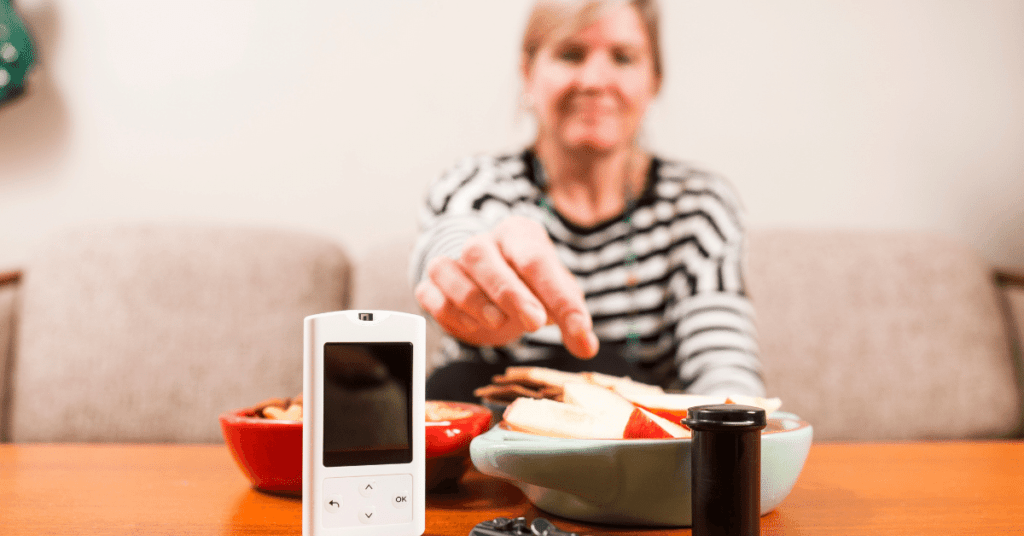Contents
- 1 What Can Diabetics Eat?
- 2 What Are Net Carbohydrates?
- 3 How Do We Get Energy From A Low-Carb Diet?
- 4 Glycemic index or GI
- 5 Glycemic Load or GL
- 6 What Can Diabetics Eat in Vegetables
- 7 What Can Diabetics Eat-In Fruits
- 8 Best traditional Foods Diabetics Can Eat
- 9
- 10 Diet Tips For Diabetics
- 11 A Word From MantraCare
What Can Diabetics Eat?
Diabetes is a disease that requires constant treatment. You have to live healthily like you will have to exercise and eat healthy daily to keep it in control. Diabetics often question what they should eat. To know which food is good for diabetics. It’s important to know how much blood sugar level it raises. There are a couple of things you need to know before knowing what you should eat.
What Are Net Carbohydrates?
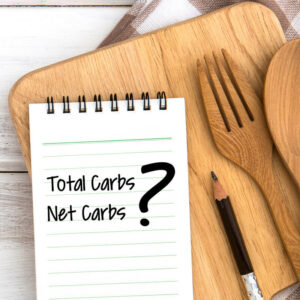
Every food item has carbohydrates, some carbohydrates will change into sugar in the stomach and get absorbed in the blood. Some are in the form of fibers, which will not convert into sugar and get excreted as it is through urine.
Net carbohydrate is the amount of carbohydrate that will convert into sugar.
Net carb= total carb- fibres
The net carbohydrates are the ones that will increase blood sugar levels. Therefore, diabetics should check the net carbohydrate amount in all food products.
In diabetes, our blood sugar level is high. So we have to choose foods that help us keep the sugar level down. Choose less net carb food to keep your blood sugar stable.
How Do We Get Energy From A Low-Carb Diet?
There is also confusion among people about carbohydrates. We are told that we get energy from carbohydrates. Now if diabetic patients opt for a low carb diet how will they get energy? The answer to this question is that it’s true that carbohydrates are the main source of energy but fat and protein are equally important and they can also provide energy. Diabetics who are obese also choose a low-carb diet so their bodies will use the fat and protein from body muscles for energy, leading to weight loss. Therefore diabetics should eat fewer carbs to keep their blood sugar stable.
Glycemic index or GI
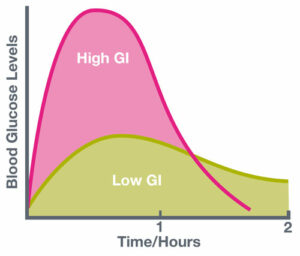
The glycemic index is a way of measuring how quickly the food item may raise blood sugar levels. Glycemic index rates food items from 0 to 100 scale.
If the GI of food is 0 that means it does not increase sugar level. And as much as this number increases, the faster that food will increase the sugar level.
For a patient with diabetes, checking the glycemic index of a food item is one safe way to select which food they can eat and what they can not, to keep their blood sugar from rising.
Foods that have a GI range from 0-55 are considered low GI. These can be Avocados, cherries, blackberries, strawberries, guava, pears, etc. Diabetics can eat them on a daily basis.
Foods with GI ranges between 56 to 69 are considered medium GI foods. For example- papaya, banana, kiwi, etc. Diabetics can eat them with some other protein-containing food like cheese or nuts in lesser amounts.
And foods with a GI of 70 or above, are considered high GI foods that diabetics should avoid. Fruits like watermelon, ripe pineapple are high GI.
A diabetic should choose low GI foods over high GI because low GI foods do not cause a spike in blood sugar levels.
Glycemic Load or GL
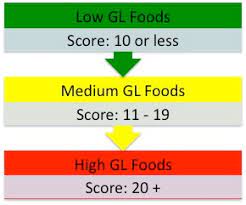
Glycemic load (GL) takes into account the Glycemic index of food plus the number of carbohydrates in a serving. GL may be a more accurate way of assessing how food affects blood sugar management over time. Low-GI and low-GL foods are safe and suitable foods for helping control blood sugar levels.
People may be surprised to learn that many foods have a low glycemic index. People digest starchy vegetables easily, such as potatoes and grains, more rapidly, so these have a higher GI index.
Glycemic load= glycemic index X total carbs / 100
GL of wheat flour= 70x 70/100= 49.
GL of apple= 35×12/100= 4.2
Almond= 5×20/100=1
This proves that the lower the carbs in food are, the lower will be the glycemic load of it. The food items that come under 10 GL are low GL food. Diabetics should not exceed a glycemic load of 50 in the whole day. To sum up, foods with a low Glycemic index and low glycemic load will not affect blood sugar levels and are suitable for diabetics.
What Can Diabetics Eat in Vegetables
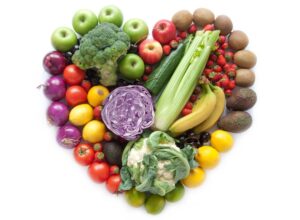
Spinach
Spinach is established as a diabetes superfood by the American Diabetes Association. It is full of dietary fibers and also has a very low glycaemic index. The glycaemic load of a bowlful of spinach is almost zero, which makes it very useful in lowering blood pressure and supporting stable blood glucose levels.
Spinach is very low in calories. Spinach contains a high amount of carotenoids, vitamin C, vitamin K, folic acid, and calcium.
Asparagus
About half of the carbohydrates in asparagus are fiber, making this green vegetable an excellent and healthy choice for diabetics. The glycemic load of 1 cup of chopped raw asparagus is only 1, which is quite low and perfect for Diabetics. With the relatively low amount of carbohydrates which is 3.2 grams in 1 cup of chopped raw asparagus, the blood sugar levels will not spike up in diabetics.
Drumstick
Drumstick or moringa has many important vitamins and minerals. The leaves of drumsticks have 7 times more vitamin C than oranges and about15 times more potassium than bananas. It also contains antioxidants, substances that can protect cells from damage and may boost your immune system. Some studies say that some of these antioxidants can also lower blood pressure (hypoglycemia) and reduce fat in the blood and body.
Several early studies show that insulin-like proteins are found in moringa, which may help lower blood sugar. Plant chemicals found in the leaves might help the body process sugar better, and it may affect how the body releases insulin.
Cauliflower
Cauliflower is a healthy vegetable for diabetics. Along with other common cruciferous vegetables, cauliflower is also a good source of sulfur-containing compounds called glucosinolates. Research shows that glucosinolates play a role in calming inflammation in your body, and may protect against cancer and heart disease due to their antioxidant activity.
Cauliflower has only 5 grams of carbs per cup and 2 grams of fiber, so it does not cause blood sugar spikes.
Cabbage
All the vegetables mentioned above are low in carbs. But cabbage has a lot of antioxidants and antihyperglycemic properties too. That gives it medicinal properties for diabetes. It also has a low-calorie count and does not affect the daily calorie intake. Cabbage helps in lowering blood sugar levels and also helps to control fluctuations and keep the readings in the safe range.
What Can Diabetics Eat-In Fruits
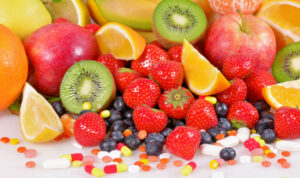
Peaches
Peaches have a GI of 40, have relatively low carbohydrates, and are included in low GI fruits. This fruit is full of vitamin C and potassium that are healthy for diabetics. This fruit can be included in the daily diet of a diabetes patient.
Pears
With GI 38 Pears are rich in vitamins A, B1, B2, C, and E and fiber, which help regulate blood sugar levels, lower cholesterol, boost the immune system, and improve digestive health. Pears are particularly beneficial for people who have Type 2 diabetes because they help improve insulin sensitivity. Diabetics can eat a small- or medium-sized pear. You can enjoy a pear as a sweet snack.
Avocado
Avocado has a GI as low as 15, and is naturally low in sugar, with just 1 gram of sugar per fruit, avocados are very healthy for diabetics. They also lower the level of bad cholesterols in the body that helps in stabilizing blood pressure while protecting the heart. One medium-sized avocado daily is good for diabetics.
Raw banana
Raw bananas are a healthy option for diabetics as they have resistant starch which slows down the absorption of carbohydrates. It helps in managing blood sugar levels. Raw bananas also regulate cholesterol levels, ending up protecting our bodies from heart diseases.
Berries
These are a tasty choice for diabetics when eaten raw and can also be eaten along with oatmeal or meat. Berries like blueberry, raspberry, and strawberry are all healthy for diabetics. They have a low GI and are full of antioxidants, fibres, and vitamin C. These also have less sugar so you can eat them with oatmeal, curd, salad, or smoothies.
Best traditional Foods Diabetics Can Eat
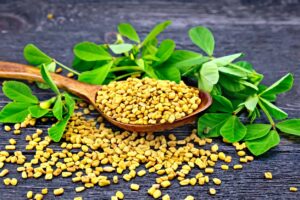
Barley
Barley, more commonly known as jau in India, helps lower your blood sugar because it is a good source of fibres. Whole-grain foods like oats, brown rice, jowar, or ragi contain both soluble and insoluble fibres that help in managing blood sugar.
Bitter gourd
Bitter gourd or karela contains insulin-like compounds called polypeptide p, which helps in lowering blood sugar levels naturally.
A study of journal chemistry and biology proves that eating bitter gourd decreases the uptake of glucose and improves glycemic control.
Gooseberry
Gooseberry also known as amla is an old Indian remedy to control high blood sugar (hyperglycemia). Amla also contains chromium which regulates carbohydrate metabolism. It also increases insulin sensitivity in your body, making the cells more receptive to glucose. It can help in controlling blood sugar levels.
Fenugreek
Fenugreek or methi is very good for diabetics. The research found that intaking 10 grams of fenugreek seeds soaked in hot water can help in controlling type 2 diabetes naturally. Fenugreek water is also potent enough to lower blood sugar in diabetic patients. The fibers present in it slow down the digestion process which slows down the absorption of sugar. The fenugreek water hence controls how the body uses sugar.
Beans
Beans are a rich source of healthy fibers, nutrients, and protein. These make us feel full for longer thus decreasing our carbs intake. The low GI index of beans reduces blood sugar levels in diabetics. Beans have vegetable protein which is very beneficial for diabetics. Consuming one cup of beans every day with a low Glycemic index diet can help in lowering blood sugar levels and the risk of artery diseases in diabetes patients.
Diet Tips For Diabetics
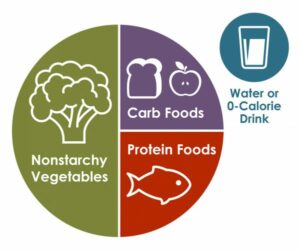
Eat Complex Carbohydrates
Complex carbohydrates are rich in fiber content which digests slowly. Thereby blood sugar does not increase rapidly unlike incase of simple carbohydrates. Foods like wheat, fruits with skin and pulp, rice with vegetables, salads, any kind of vegetables, wheat bread, wheat noodles, wheat pasta, etc. are complex carbs.
Include Fruits In Your Diet
Consume fruits with a low glycemic index on a daily basis to satisfy hunger and meet daily nutritional needs. Low sugar-containing fruits are strawberries, peaches, avocados, and blackberries.
Eat Fibre-rich Food
Fiber has a key role in diabetic diet management to suppress blood sugar levels. The best sources of dietary fiber are raw and cooked vegetables, whole fruits with pulp and whole grains, and legumes.
Consider Animal Protein
It is advised to include some amount of protein such as lean meat, eggs, chicken, fish, etc in your diet. If you are a non-vegetarian. However, if you do not eat meat, a vegetarian must have protein from plant and dairy sources. These could be broccoli, homemade paneer, low-fat cheese, different pulses and legumes, soybeans, mushrooms, tofu, etc.
Maintain A Healthy Weight
Maintaining a healthy weight in diabetes is important because it reduces the risk of developing other complications of diabetes and helps in controlling blood sugar as well. Diabetic people with a healthy weight tend to face fewer symptoms of diabetes and feel more energetic.
A Word From MantraCare
If you are facing diabetes-related issues, MantraCare is here to help. Book your free trial online diabetes consultation session now to connect with a specialist diabetologist.
